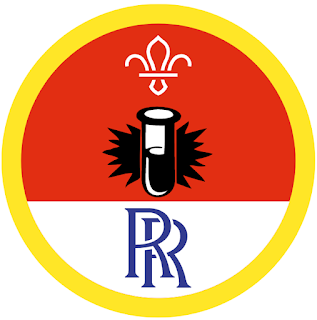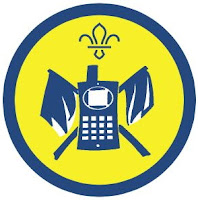Beavers: Cook Activity Badge

There are 4 challenges we need you to complete to earn your Cook badge please keep a record of all your progress by keeping the worksheets or taking photos so you can hand them into your Beaver Leader when you see them.
Task 1: Find out what makes a balanced diet.
Please could your parent/carer print out the attached word search (but hold back the answer sheet) and find as many food items in the word-search as you can. When you find a food item, you should draw a circle around it, so that it can still be read.
The foods in the word-search are all part of different food groups. Each group contains something we need every day to keep us healthy and happy. Colour code each food group Green – Fruit and vegetables, Red – Proteins, Blue – Carbohydrates, Yellow – Dairy, Purple – Treats.
What are your three favourite foods, which food group do they fit into? Keeping our bodies healthy requires us to eat some items from each of the food groups. Are there any groups that you enjoy eating more than others? What things could you change about your diet to include more foods from the important food groups? To find the foods to go in the food groups, you had to complete a word-search puzzle. What did you do to find the words for foods? Did you see a pattern between the food items you found before you were given the second page? How could you use your colour-coded word-search to help others remember to eat from all of the food groups?
Task 2: Find out about why being clean in the kitchen is important.
https://www.independent.co.uk/life-style/health-and-families/coronavirus-wash-hands-video-pepper-soap-water-virus-children-tom-fletcher-a9403946.html there might be a better link to this experiment.
Watch this video and copy it at home using a bowl of water, a sprinkling of pepper and some hand soap. What happens if you dip your hands in the water? Anyone who still has any pepper water on their hands should wash them again, but this time demonstrate how to rub around each finger and over and under the palms and wrists, and how to carefully rinse at the end. They should rub with soap for as long as it takes to sing the ‘Happy birthday’ song twice, and everyone should dry their hands carefully on a towel (or using a hand dryer) without wiping them on their clothes.
This activity helped everyone to live healthily by showing how important hand washing is to keep hands clean. Just like the pepper water stayed if people didn’t wash their hands well, germs and dirt can stay too. Germs and dirt can get into people’s food (or their mouths in other ways, for example if they bite their nails or suck their thumbs) and make people poorly. When else do people need to wash their hands? People may say after they’ve been to the toilet, before they eat, or after touching animals. What have we learned about handwashing? Who’s going to change how they wash their hands in the future? You could even teach a friend or someone they live with what they’ve learned about hand washing.
N.B. If you are allergic to pepper try using a different herb or spice to demonstrate the presence of germs.
Task 3: Learn about being safe in the kitchen.
Please could your parent/carer print out the attached word search (but hold back the answer sheet) and find as many hazards in the picture as you can. Discuss with your parent/carer what the dangers are.
There are lots of dangers in the kitchen. Here are some to talk about with your child: Kettle with hanging cord – scald, Oven – burn, Pot on stove with handle sticking out – burn, Sharp knives – cut, Water spill on floor – slip, Open lower drawers – trip, Bottle of bleach – poisoning, Drawers – trapped finger, Skateboard – trip, Washing machine – injury risk from machine itself, and liquid laundry capsules, Hot drink – scald
This activity let everyone learn the skills they need to be safe in the kitchen and live healthily. This is important, as it stops people getting hurt because of accidents or illnesses. It’s great that you were observant enough to stop the chef getting badly hurt or ill – well done!
Task 4: Choose three dishes to prepare and cook.
Ask your parent or carer to help you plan 3 dishes to cook with their help. At least one dish should be savoury and one should be sweet. Ask your parent or carer to find or shop for the ingredients you need.
Once your parent or carer has had time to shop for the ingredients needed, get ready to cook by tying up their hair, putting on an apron, and washing their hands.
Now may be a good time to check you remember about being clean and safe in the kitchen Make sure to wipe down the surface with disinfectant spray before you start cooking.
Start the munch machine
Everyone should follow their 3 recipes to create a delicious meal. Make sure you help with washing up, tidying, and wiping down surfaces. An adult should remove the finished dish from the oven. Remember that ovens take time to cool, so they can still be dangerous even if they’re switched off.
This activity was a chance for you to practice the skills and knowledge you have while learning new ones and making a tasty feast. As everyone enjoys their food, you can talk about the skills you used when cooking. Did anyone try something new? Some Beavers may not have opened tins, grated, or mashed things before. Did anyone taste a new food? It was important to use the skills you already had, including being safe and clean in the kitchen, while learning new ones. Can anyone name some things that adults should still help with? You may think about hot things or sharp things.
This activity was also a chance to be independent. You had to make your own decisions, for example, adjusting the taste when they made a dressing, or deciding what vegetables to add to their dish. Did anyone have a chance to try something other people normally do for them? You may think about chopping vegetables or using a grater. It’s great to achieve things for yourself – well done!
Safety
- Food
- Check for allergies before you begin. Make sure you have suitable areas for storing and preparing food and avoid cross contamination of different foods.
- Cooking
- Teach young people how to use cooking equipment safely. Supervise them appropriately throughout. Make sure it’s safe to use and follow manufacturers’ guidelines for use.
- Sharp objects
- Teach young people how to use sharp objects safely. Supervise them appropriately throughout. Store all sharp objects securely, out of the reach of young people.
All activities must be safely managed.
Next Beaver Badge: 31/03/2020
Next Beaver Badge: 31/03/2020





